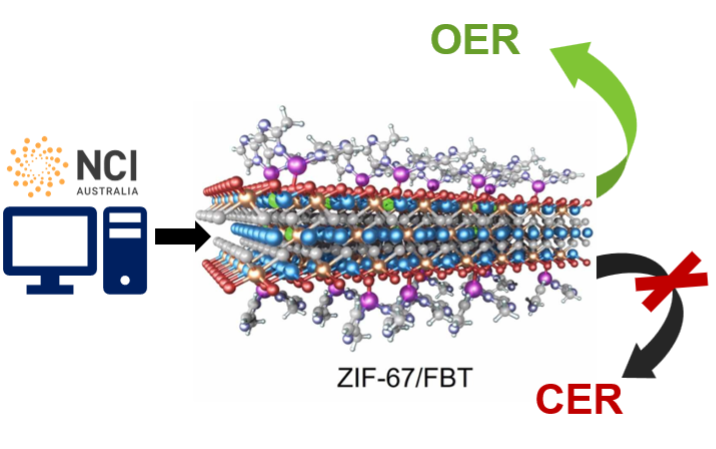Ravichandar Babarao, an Associate Professor at the Centre for Advanced Materials and Industrial Chemistry, (Associate Investigator at the ARC Centre of Excellence for Green Electrochemical Conversion of CO2, GETCO2), School of Science, RMIT University, along with other researchers have reported the development of a new material that could significantly improve the process of producing green hydrogen directly from seawater, addressing a key challenge for sustainable energy.
The recently published article, “Breaking the inactivity of MXenes to drive Ampere-level selective oxygen evolution reaction in seawater” demonstrates a new approach through which MXenes can be modified for producing green hydrogen directly from seawater via electrocatalysis.
Conventional materials used for splitting seawater into hydrogen and oxygen often face problems like corrosion and low efficiency. To overcome this, the research team engineered a special material by incorporating iron (Fe) and boron (B) into a type of 2D material called Ti₃C₂Tx-MXene. This new combination, named FBT, when combined with another 2D material, namely metal organic framework called ZIF-67, allows for more efficient oxygen evolution while reducing harmful chlorine reactions that usually occur in seawater.
The material works by creating strong ionic bonds at the surface, improving its activity and durability. This 2D/2D heterostructure shows high performance, requiring low energy to drive the reaction and remaining stable for over 370 hours in harsh seawater conditions. This breakthrough opens the door to better hydrogen production methods, offering a more sustainable and corrosion-resistant option for large-scale applications like clean energy production, environmental protection, and beyond.
Dr. Babarao's PhD student, Ashakiran Maibam, currently a post-doctoral researcher at the Institute Charles Gerhardt Montpellier in France, has provided critical insights into the nature of bonding at the ZIF-67/FBT heterointerface and the mechanisms of water splitting. The computational resources at the National Computational Infrastructure (NCI) have been essential for these findings. The project utilized NCI-licensed computational software on CPU nodes with 128 cores, incurring an approximate computing cost of 1 MSU, along with 198 GB of memory for each calculation and around 500 GB of data storage.
“A fundamental understanding of the reaction mechanisms, gained through high-level DFT calculations combined with in situ operando experimental characterization, can significantly enhance the development of robust catalysts for seawater electrolysis. By optimizing catalyst design based on these insights, we can achieve higher efficiency and stability in hydrogen production from seawater, ultimately contributing to more sustainable energy solutions and advancing the field of renewable energy technologies.”
With a vision for sustainable technologies based on two-dimensional materials, Dr. Babarao aims to integrate machine-learning-guided discovery of sustainable materials for various energy and environmental applications. The resources granted by NCI have been the backbone of research in his group. This research provides a promising step towards making MXenes more than just conductive materials and turning them into active catalysts for clean energy technologies.
If you would like to know more, you will find the research article available here:

Figure: Computer-aided investigation of water splitting activity in 2D/2D heterostructure.